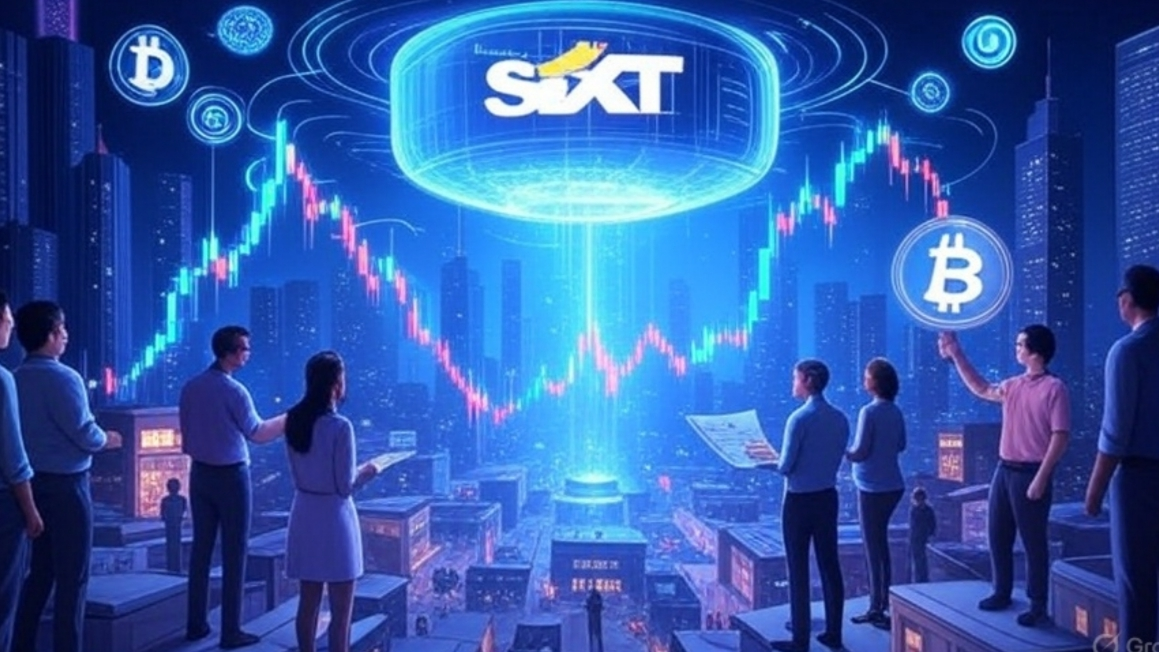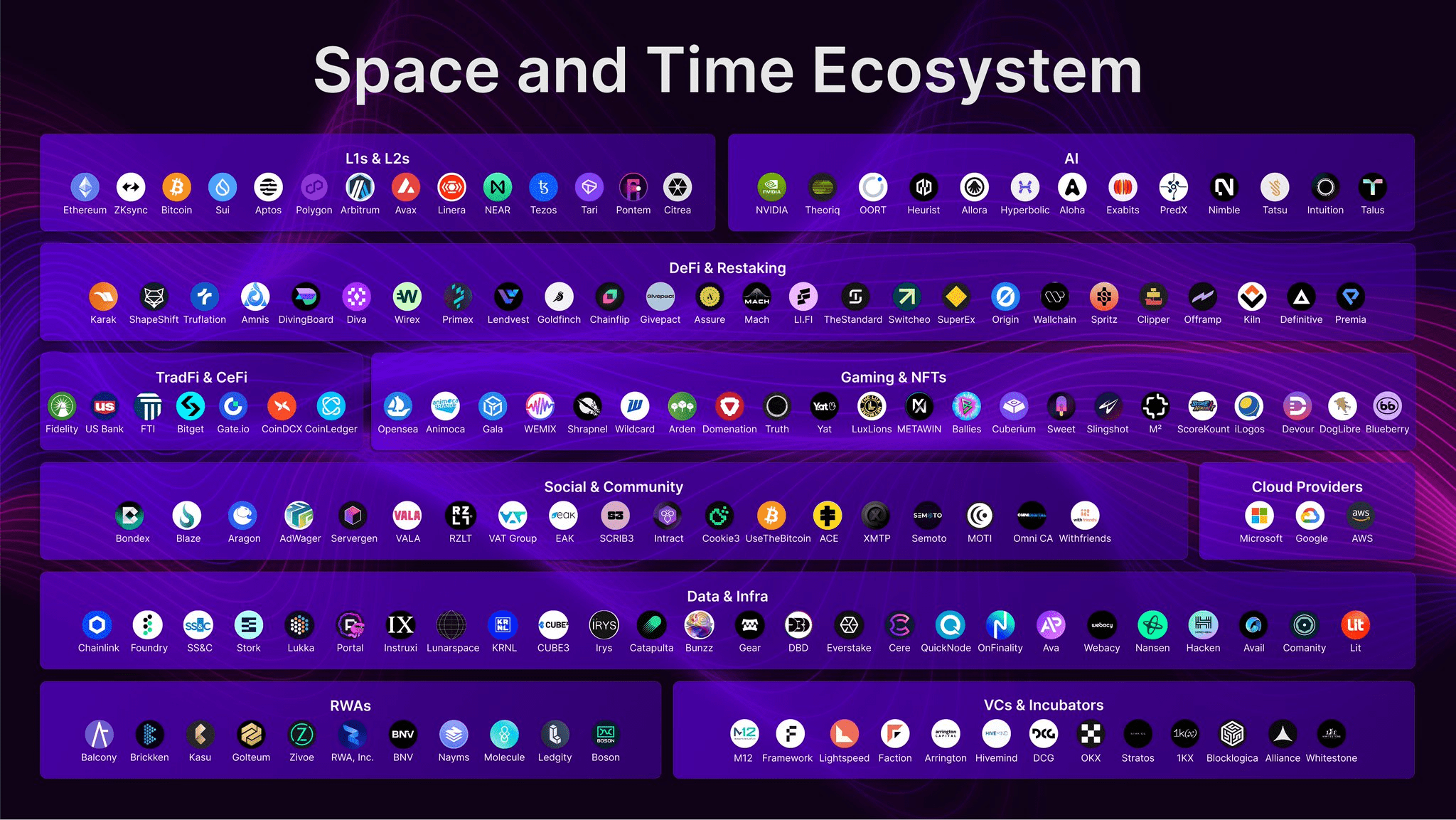
In the rapidly evolving world of Web3, Space and Time (SXT) stands out as a revolutionary solution to the decentralized data problem. Backed by Zero-Knowledge (ZK) technology and major players like Microsoft, the project promises fast, accurate, and verifiable data for smart contracts, oracles, and AI agents. However, despite strong fundamentals, the price of SXT has recently dropped significantly—down over 41.47% from its all-time high (as of May 2025). What’s behind this decline, and is SXT still a project worth your attention?
---
What is Space and Time?
Space and Time is a decentralized data platform that merges on-chain (blockchain) and off-chain (external) data into a high-speed data warehouse. Utilizing innovative technologies like Proof of SQL and ZK-proofs, the platform enables developers to run complex queries with sub-second latency—processing up to 600,000 rows of data in less than one second.
This infrastructure is essential for the scalability of Web3 applications such as DeFi, NFTs, and AI agents.
---
The Role of the SXT Token
SXT is the core utility token powering the Space and Time ecosystem, with key functions including:
Staking: Users can stake SXT to support network security and earn rewards.
Payments: SXT is used to pay for data queries, APIs, and other services.
Security Incentives: Through slashing mechanisms, SXT ensures node operators act honestly and maintain data integrity.
Launched via Binance Launchpool in May 2025, SXT attracted initial hype thanks to allocations tied to staking BNB, FDUSD, and USDC. But once the excitement faded, the token price began to slide.
---
Why Did SXT’s Price Drop?
Despite its strong technology, several market dynamics have contributed to the recent price decline:
1. Crypto Market Volatility
The crypto market remains uncertain, with Bitcoin hovering near $90,000 and testing key resistance and support levels. This instability discourages capital flow into altcoins like SXT. When BTC dips or fails to break out, altcoins often face increased selling pressure—and SXT is no exception.
2. Delayed Staking Participation
Investors are holding back on long-term staking during volatile periods. Instead of locking funds for yield, many opt for short-term trading or stablecoin positions, reducing demand for SXT.
3. Low Liquidity and Unlocks
With a total supply of 1 billion tokens—much of which is still locked or being gradually distributed—market liquidity remains limited. Early investors or Launchpool participants selling for profits can easily move the market, leading to sharp price swings.
4. Early-Stage Adoption
Despite backing from Microsoft and infrastructure integrations, SXT's ecosystem is still in its infancy. Adoption is slower than some may expect, especially with established competitors like Chainlink and The Graph in the space.
---
Bitcoin’s Seasonal Trends and SXT Staking Opportunities

Historically, Bitcoin follows a seasonal pattern:
Late May to September: Accumulation phase. BTC starts slow upward movement post-spring correction. This may create an opportunity to stake undervalued tokens like SXT.
October to March: Bullish phase. Bitcoin tends to peak during this period, and altcoins often rally in its wake. This could lift SXT demand and staking returns.
If history repeats, late May through September 2025 might be a strategic window for long-term SXT staking—especially if Bitcoin regains bullish momentum.
---
Why SXT Still Holds Long-Term Potential
Even amid price correction, Space and Time maintains strong fundamentals:
Unique Technology: Proof of SQL + ZK proofs offer unmatched speed and security for data verification—ideal for DeFi and AI.
Major Backers: Partnerships with Microsoft and usage by firms like Google bolster its legitimacy.
Real Use Cases: The platform handles hundreds of terabytes of real-time data for Ethereum, Base, and other major chains.
Scalability: Fast, low-latency processing sets SXT apart from slower competitors.
---
Key Risks to Monitor
Of course, no crypto investment is risk-free:
Competition: Chainlink and The Graph have first-mover advantage and large developer communities.
Regulatory Pressure: Decentralized data platforms may face future legal scrutiny.
Price Volatility: As with many new tokens, SXT remains vulnerable to rapid price fluctuations.
---
Final Thoughts: Opportunity in the Dip?
The recent price drop appears to reflect broader market trends rather than a failure of Space and Time’s tech or vision. If Bitcoin enters a bullish phase later in 2025, SXT could rebound significantly—especially as staking becomes more attractive at lower prices.
